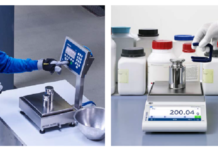Abstract
The shift towards sustainability is sweeping almost all industries globally in varied forms. Bio-based plasticizers are one such element. Acting as critical additives, green or eco-friendly plasticizers are meant to enhance the durability, flexibility and functionality of plastics while curbing their environmental trail. Unlike traditional plasticizers like phthalates that represent harmful chemicals, environment-friendly options are made from renewable sources or synthesised to lower their toxicity and ecological risk.
Introduction
Throughout the world, governments are promulgating legislation to limit the use of harmful phthalate-based plasticizers, nudging industries to use environmentally friendly substitutes. The surge in strict regulations regarding the use of plasticizers and rising consumer preference for sustainable solutions has led to greater adoption of these alternatives across diverse segments, including packaging, automotive, consumer goods and construction. An IndustryARC estimate notes the plasticizers market is projected to touch $20.5 billion by 2030, recording a 5.6% CAGR between 2024 and 2030.

An Overview
As industry and public consciousness increase vis-à-vis the health and environmental threat of phthalates, the concurrent transition towards green sources has become more pronounced. The health issues include development and reproductive concerns. Therefore, non-phthalate options are finding greater use as safe substitutes. Further, the easy availability of renewable feedstock and advances in production technology have made bio-plasticizers more cost-efficient while being aligned with the sustainability goals of diverse industries. However, some resources or raw materials are not available in India. For example, the raw material palm oil is supplied from Southeast Asian countries globally.
Nevertheless, the shift to eco-friendly plasticisers is occurring speedily thanks to the advent of carbon credits and ESG norms. Due to these factors, many domestic users have shown keen interest in using green plasticisers. But when it comes to R&D, the investments are relatively low in India and only a few companies are looking into this to be future-ready.
The advent of bio-based options has driven faster market expansion of phthalates. Derived from vegetable raw materials, bio-derived plasticizers are being put to greater use as substitutes for petroleum-based products. As consumer demand burgeons for safer, sustainable substitutes, manufacturers are investing more in the R&D of bio-based solutions to highlight their adherence to socially responsible practices.
The plasticizers market covers phthalates, non-phthalates, phosphates, dicarbonates, fatty acid esters, citrates, polyesters, bio-based plasticizers and others. Its applications include PVC films, wires & cables, flooring, wall covering, roofing, rubber, adhesives, tubes, toys, ink & waxes and more. The end-user industries cover aerospace (commercial, military and others), automotive (passenger cars, light commercial vehicles, heavy commercial vehicles), building & construction (residential, commercial, industrial, infrastructural, medical & healthcare, pharmaceuticals, medical equipment, etc.), personal care & cosmetics (deodorants, body care, hair care, nail care, etc.), electrical & electronics and more. Some elaboration is needed on the above elements for a proper understanding of the green plasticizers industry and its overall significance.
The Range of Eco-friendly Plasticizers
- Citrates: Derived from citric acid, citrate-based plasticizers are common in food packaging, personal care products and toys. Being biodegradable, safe and compliant with regulatory norms, they are an excellent choice for sensitive applications. Bio-plasticizers of citric acid esters are transparent, colourless and odourless liquids, categorised as non-VOCs (volatile organic compounds) with immense storage stability. These adaptable plasticizers are renowned for their huge human and environmentally sound profiles, making them ideal for delicate items such as toys, food packaging and medical instruments plus personal care and pharmaceutical products. They are also a sound alternative to petrochemical-derived plasticizers such as phthalates, adipates or benzoates.
- Castor oil derivatives: Made from castor oil, these renewable and biodegradable plasticizers have applications in flexible PVC, coatings and adhesives. These plasticizers are popular for their environmental benefits and great performance characteristics.
- Succinates and sebacates: As bio-based plasticizers synthesized from renewable sources, they are used in automotive, industrial products and other high-performance applications.
Applications across Core Industries
- Packaging: Worldwide, this industry remains a primary consumer of eco-friendly plasticizers, especially when it comes to food-grade, flexible packaging solutions. Green plasticizers boost both the flexibility and safety of materials used in wraps, films and containers, simultaneously safeguarding compliance with food safety standards. The mounting demand for recyclable, biodegradable packaging has bolstered the use of eco-friendly additives.
- Healthcare: Using eco-friendly plasticizers in medical applications promotes the safety of products like medical tubing, IV containers, blood bags and more. The additives curb any risk of harmful substances leaching, thereby meeting stringent safety standards mandated in the healthcare sector.
- Automotive: Whether it is seat covers, wiring, dashboards, etc., eco-friendly plasticizers are used in all interior components. Besides improving the flexibility and resilience of automotive plastics and limiting harmful emissions, these additives are aligned with the sector’s drive for greener and more sustainable vehicles.
- Construction: Eco-friendly plasticizers are prevalent in PVC (polyvinyl chloride) applications that cover flooring, cables and pipes. Apart from enhancing material durability and flexibility, these additives enable more sustainable construction practices. As the construction industry stresses green building initiatives universally, there is increasing demand for low-VOC and non-toxic plasticizers. The rapid expansion of the construction industry has been instrumental in driving more demand for bio-plasticizers. Their use is favoured in construction materials due to the additional safety features and lower environmental impact.
Similarly, citric acid esters are used in nitrocellulose, cellulose acetates and other bio-based polymers because of their positive influence on processing and product characteristics. Given their overall compatibility across polymers and fast composting that doesn’t harm the air, soil and water, they help address growing concerns regarding end-of-life norms for biopolymer-based products. As a result, they meet all functional needs while adhering to sustainability requirements.
Broad Market Drivers of Eco-friendly Plasticizers
- Environmental regulations: Internationally, regulations are rising to restrict phthalates and other conventional plasticizers, advancing the demand for green substitutes. Across continents, many nations have imposed curbs or a complete ban on petrochemical-based elements due to their potential health hazards, including hormone interference. In such situations, bio-based alternatives are the best way to comply with national and international rules. Bio-plasticizers sourced from vegetable oils, natural fats and other renewable materials are better for the environment and human health. In segments such as packaging, toys and automotive, where consumer safety is paramount, tougher guidelines are being imposed to promote safe substitutes.
- Rise in food packaging: The food packaging segment’s steady growth has provided a substantial thrust to the bio-plasticizers market. The soaring demand for ready-to-eat meals, convenience foods and online food deliveries has led to an exponential rise in demand for sustainable packaging solutions. With bio-plasticizers, manufacturers can conveniently produce cost-effective, lightweight and versatile packaging material to prevent contamination and extend the shelf life of food products. Additionally, rigorous rules regarding packaging materials and food safety have spurred greater use of plasticizers since they meet compliance norms. With the food industry consistently innovating and expanding, the bio-plasticizers market is anticipated to see sustained growth while meeting evolving food packaging application needs.
- Expanding cosmetics and personal care industry: The rapid rise of the cosmetics and personal care sectors has been a big boon for the bio-plasticizers segment. Plasticizers are regularly used in personal care items (such as lotions, creams, colour cosmetics and hair care products) to augment the flexibility, texture and longevity of their formulations, enhancing product efficacy and consumer satisfaction levels. In tandem, the sharp trend towards organic and natural formulations has triggered the development of bio-based plasticizers to achieve sustainability goals. Changing lifestyle habits, higher disposable incomes and broader awareness of personal grooming have also been pivotal in the global expansion of the cosmetics and personal care industry, which has raised the demand for bio-plasticizers.
- Advances in metal ceramics: The performance of bio-plasticizers is enhanced through the combination of metal ceramics such as copper, iron and magnesium, which boosts their effectiveness. The inclusion of metal ceramics helps to tackle problems linked with oxidation and loss of bio-plasticizers (such as castor oil) during processing. By improving the stability and lifespan of bio-plasticizers, metal ceramics lower the acid values and saponification while raising the flashpoint. Combustion techniques used in the production of these ceramics further facilitate the meeting of better phase purity and powder traits, which include enhanced sinterability and increased surface area, boosting the characteristics of bio-plasticizers.
Conclusion
As the consequences of climate change and global warming are exacerbated, environmental awareness keeps growing among consumers. Consequently, industries find it more rewarding to use eco-friendly materials across all operations and supply chains. Be it food packaging or pharmaceuticals, cosmetics or children’s toys, automotive or aviation, every industry is realising the criticality of using eco-friendly plasticizers to woo customers and win greater market share.
While lowering their environmental footprint and staying in sync with broad sustainability goals, eco-friendly plasticizers are ensuring greater brand loyalty from consumers and other end-users. As innovations keep driving advancements in the creation of novel bio-based plasticizers, the market will keep expanding and promoting a more sustainable future for the coming generations.































